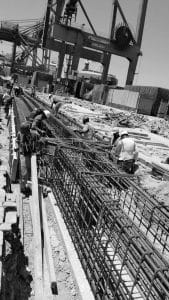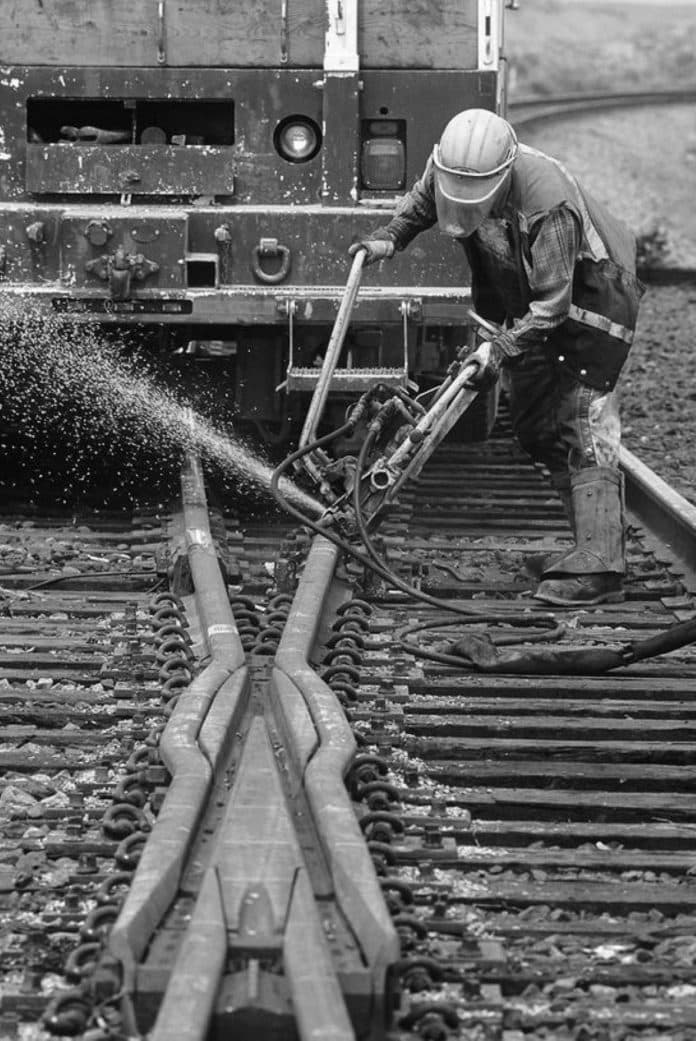Introduction to Tanzania’s Railway Network
Tanzania’s railway network has been an integral part of the country’s transportation infrastructure since the early 20th century. Originally built during the colonial era, the network has undergone various expansions and renovations over the years. However, in recent decades, the system has faced significant challenges, including aging infrastructure, limited connectivity, and low operational efficiency.
Despite these obstacles, the Tanzanian government has recognized the strategic importance of a robust and modern rail network for the country’s economic development. As a result, they have unveiled ambitious plans to extend and upgrade the existing railway system, with the goal of creating a more integrated and efficient transportation network.
Importance of Railway Extensions for Tanzania’s Development
The proposed railway extensions are crucial for Tanzania’s long-term growth and prosperity. By enhancing connectivity and accessibility across the country, these projects have the potential to:
- Boost economic activity: Improved rail connections can facilitate the movement of goods, services, and people, thereby stimulating trade, investment, and job creation.
- Enhance regional integration: Expanded railway lines can strengthen Tanzania’s ties with its neighboring countries, promoting cross-border trade and regional economic cooperation.
- Improve social welfare: Reliable and affordable rail transportation can enhance access to essential services, such as healthcare and education, for communities across the country.
- Reduce environmental impact: Shifting cargo and passenger transport from road to rail can lead to lower greenhouse gas emissions and a more sustainable transportation system.
Overview of Proposed Railway Extensions

The Tanzanian government has outlined several ambitious plans to extend and modernize the country’s railway network. Some of the key proposed extensions include:
- Standard Gauge Railway (SGR) Project: This transformative initiative aims to construct a new 2,561-kilometer standard gauge railway line, connecting the port city of Dar es Salaam to the country’s western border with Burundi, Rwanda, and the Democratic Republic of the Congo.
- Central Railway Line Extension: The existing central railway line, which runs from Dar es Salaam to Mwanza, is planned to be extended to the Ugandan border, enhancing connectivity with East Africa’s regional trade hubs.
- Southern Railway Line Extension: The southern railway line, which currently connects Dar es Salaam to Mbeya, is proposed to be extended to the Zambian border, strengthening Tanzania’s links with the southern African region.
- Northern Railway Line Rehabilitation: The government aims to rehabilitate and upgrade the existing northern railway line, which runs from Tanga to Arusha, to improve its operational efficiency and reliability.
Benefits of Modernizing the Rail Network
The proposed railway extensions and upgrades are expected to deliver a wide range of benefits for Tanzania, including:
- Improved Connectivity: The expanded and modernized rail network will enhance connectivity between major cities, ports, and economic hubs, facilitating the movement of people and goods.
- Increased Freight Capacity: The new standard gauge railway lines will be able to handle larger cargo volumes and heavier loads, improving the efficiency of Tanzania’s logistics and supply chain.
- Reduced Transportation Costs: Efficient and cost-effective rail transportation can lead to lower logistics expenses for businesses and individuals, ultimately benefiting consumers and the overall economy.
- Enhanced Safety and Reliability: Upgrading the railway infrastructure and equipment can improve the safety and reliability of the transportation system, reducing the risk of accidents and delays.
- Environmental Sustainability: Shifting cargo and passenger transport from road to rail can contribute to lower greenhouse gas emissions and a more sustainable transportation system.
Challenges and Considerations for Implementing Railway Extensions
While the proposed railway extensions offer significant benefits, they also come with a range of challenges and considerations that the Tanzanian government must address, including:
- Financing and Funding: Constructing and maintaining a large-scale railway network requires substantial financial resources, which may necessitate a combination of public and private investment, as well as international partnerships and development aid.
- Land Acquisition and Resettlement: The construction of new railway lines may require the acquisition of land and the relocation of affected communities, which can be a complex and sensitive process.
- Technical Expertise and Capacity: Implementing these projects will require a skilled workforce with expertise in railway engineering, construction, and operations, which may require capacity-building efforts and knowledge transfer.
- Coordination and Stakeholder Engagement: Effective coordination between various government agencies, private sector stakeholders, and local communities will be crucial to ensure the successful planning and execution of the railway extensions.
- Regulatory and Policy Frameworks: The government will need to establish robust regulatory and policy frameworks to govern the development, operation, and maintenance of the expanded railway network.
Potential Economic Impact of the Proposed Extensions
The successful implementation of the proposed railway extensions is expected to have a significant positive impact on Tanzania’s economy, including:
- Increased GDP Growth: Improved transportation infrastructure can contribute to higher economic productivity, leading to increased GDP growth and overall economic prosperity.
- Job Creation: The construction, operation, and maintenance of the railway network will generate numerous employment opportunities, both directly and indirectly, across various sectors.
- Expanded Trade and Investment: Enhanced connectivity and logistics efficiency can attract more domestic and foreign investment, as well as facilitate the growth of cross-border trade and regional economic integration.
- Improved Agricultural and Industrial Productivity: Efficient rail transportation can enhance the movement of agricultural and industrial goods, boosting the competitiveness of these sectors and supporting rural development.
- Increased Tax Revenue: The economic growth and expansion of business activities generated by the railway network can lead to increased tax revenues for the Tanzanian government, further supporting the country’s development agenda.
Environmental and Social Implications of Railway Development

While the proposed railway extensions offer significant economic benefits, it is crucial to consider their environmental and social implications as well:
- Environmental Impact Assessments: Comprehensive environmental impact assessments must be conducted to identify and mitigate any potential adverse effects on the natural environment, such as habitat fragmentation, biodiversity loss, and greenhouse gas emissions.
- Sustainable Design and Construction: The railway projects should incorporate sustainable design principles and construction methods to minimize the environmental footprint, such as the use of renewable energy sources, recycled materials, and energy-efficient technologies.
- Resettlement and Compensation: The government must ensure that any affected communities are properly consulted, compensated, and resettled, with a focus on preserving their livelihoods and cultural heritage.
- Community Engagement and Benefit-Sharing: Local communities should be actively involved in the planning and implementation of the railway projects, and they should share in the economic and social benefits generated by the improved transportation infrastructure.
- Capacity Building and Skills Development: The railway projects should include initiatives to enhance the skills and capabilities of the local workforce, ensuring that the benefits of the modernized rail network are equitably distributed.
Funding and Financing Options for Railway Extensions
Securing the necessary funding and financing for the proposed railway extensions will be a critical challenge for the Tanzanian government. Potential sources of funding and financing may include:
- Government Budgetary Allocations: The government may allocate a portion of its annual budget to finance the railway projects, either through direct funding or by providing guarantees and incentives for private investment.
- Development Finance Institutions: International development finance institutions, such as the World Bank, African Development Bank, and China Development Bank, may provide concessional loans, grants, or technical assistance to support the railway projects.
- Public-Private Partnerships (PPPs): The government may explore PPP arrangements, where private sector partners contribute financing, expertise, and operational capabilities in exchange for concessions or revenue-sharing agreements.
- Sovereign Wealth Funds and Pension Funds: Domestic and international institutional investors, such as sovereign wealth funds and pension funds, may be interested in investing in the railway projects, either directly or through investment vehicles.
- Innovative Financing Mechanisms: The government may also consider exploring innovative financing mechanisms, such as infrastructure bonds, green bonds, or diaspora bonds, to mobilize additional resources for the railway projects.
Government Initiatives and Partnerships for Railway Modernization
The Tanzanian government has taken several proactive steps to drive the modernization of the country’s railway network, including:
- Establishment of the Tanzania Railways Corporation (TRC): The government has created a dedicated state-owned enterprise, the TRC, to oversee the planning, development, and management of the railway network.
- Collaboration with International Partners: The government has forged partnerships with various international organizations, development finance institutions, and foreign governments to secure funding, technical expertise, and technology transfer for the railway projects.
- Policy and Regulatory Reforms: The government has introduced new policies and regulations to create an enabling environment for railway development, including investment incentives, public-private partnership frameworks, and environmental and social safeguards.
- Capacity Building and Skills Development: The government is investing in training and skills development programs to ensure that Tanzania has a skilled workforce capable of executing and operating the modernized railway network.
- Integrated Transportation Planning: The government is taking a holistic approach to transportation planning, integrating the railway network with other modes of transportation, such as roads, ports, and airports, to create a more efficient and seamless multimodal transportation system.
Conclusion: Tanzania’s Vision for a Modernized Rail Network
Tanzania’s ambitious plans to extend and modernize its railway network are a clear testament to the government’s commitment to fostering the country’s economic development and regional integration. By enhancing connectivity, improving logistics efficiency, and promoting sustainable transportation, the proposed railway extensions have the potential to unlock new opportunities for businesses, communities, and the nation as a whole.
For more articles related to Railway and train travel Tanzania, click here!

































